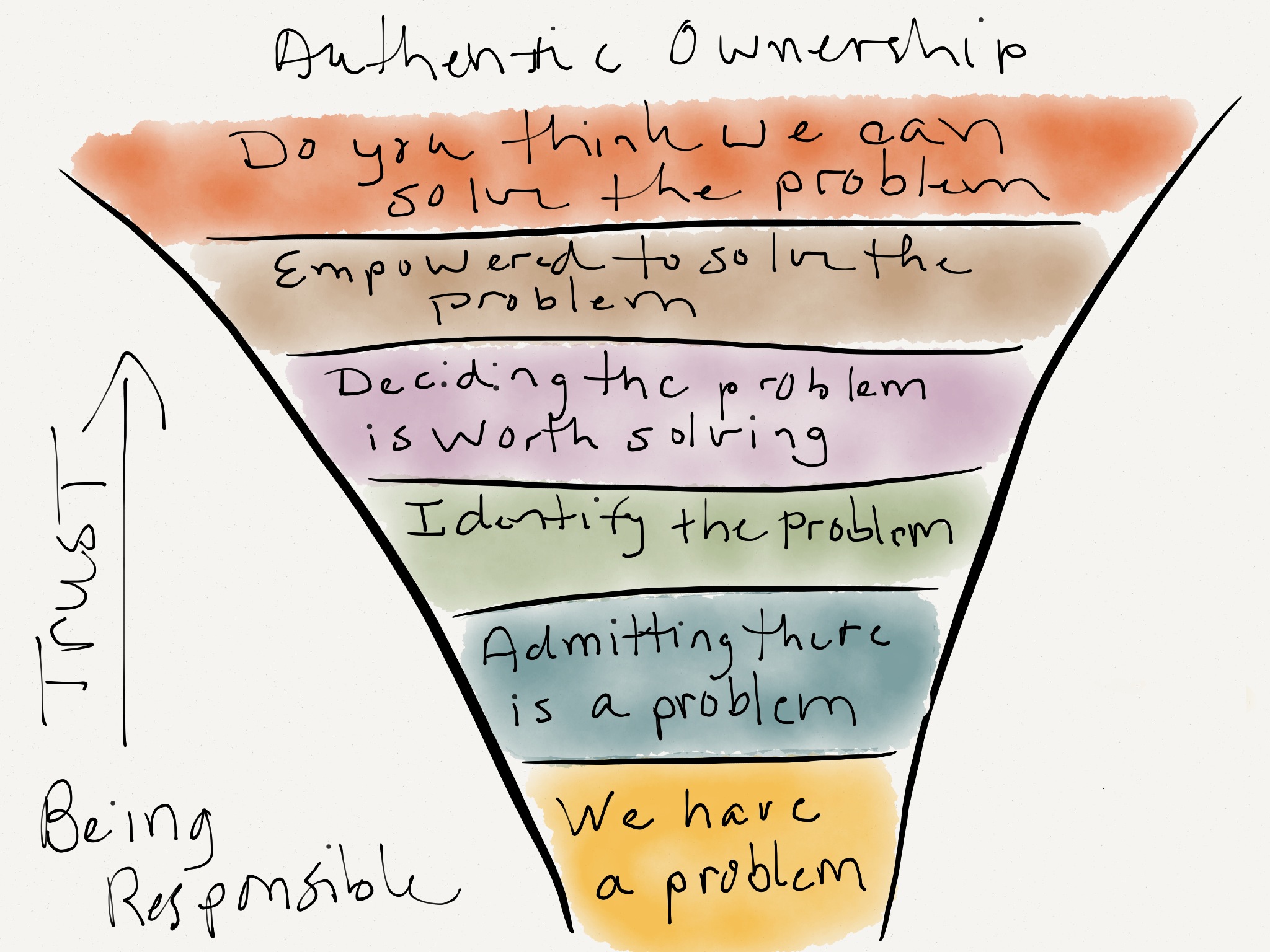Succeeding with Scrum
/It's been said that Scrum is "what we already do when our back is against the wall." That should make it easy, but reality is that it can be hard to admit that we're in a tough spot. Absent a "fight or flight" stimulus, it can be hard to get traction, and without traction, success may be just a mirage. A first step in getting started with Scrum successfully is the existence of a problem. The problem provides the fuel or energy that will sustain us when the going gets hard.
In addition to the problem, there needs to be someone who authentically owns the problem. Feeling responsible for solving the problem is not enough. The problem needs an authentic owner who cares about solving the problem.
When I'm brought in to coach a team in the use of Scrum, I start by asking 2 questions:
- What is the problem you are trying to solve?
- Who owns the problem?

The picture to the left shows a progressive model to discover answers to these questions. Starting at the bottom is the problem. Next, there's the admitting that the problem exists. This step is non-trivial. Too often, I find teams adopting Scrum as a solution in search of a problem. Have no doubt, Scrum will surface problems; but we want to start with the main problem we're trying to solve.
After admitting that there is a problem, further discussion and analysis may be required to identify the "real" problem. Often, the expressed problem is just a symptom, or worse, a solution dressed up as a problem. Some root cause analysis such as the five whys technique developed by Sakichi Toyoda can be helpful in uncovering the real problem.
Once the problem has been identified, the client decides if the problem is worth solving. There is always a cost with solving a problem. We want to make sure the benefit of solving the problem will outweigh its cost and that it is the right and timely thing to do.
Next, does the scope of the problem fall within the client's sphere of control or influence. Is the client empowered to solve the problem?
Finally, the key question: Do you think we can solve the problem? If we've progressed up this model and the answer to the last question is yes, then we proceed. Along the way, we have built up trust and understanding, both of which will serve us well on the journey ahead. Knowing the problem we are trying to solve and that we have the problem owner onboard are the first steps to success.



